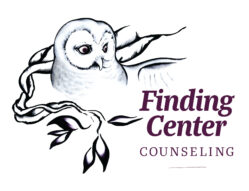Do you sometimes look at your partner and wonder when things shifted? Elly Taylor’s research out of Australia shows that when couples come in for counseling and are asked,
“When did things change?”
The answer is almost always:
“When we had kids.”
Having children shifts our relationships with ourselves, our partners, and every other major relationship in our lives. And yet, there is so little discussion out there to help prepare families to thrive during this exciting, transformative, and challenging time.
So often in our modern world of parenting within our nuclear families, we are constantly juggling and transitioning. From work to school to grocery shopping to play dates to to to….the list is never ending. In all the busyness of hand offs and transitions, it can be easy to get into automatic pilot and forget to stop and check in. And yet, during a time when so much in your lives and yourselves is changing, checking in with your partner, the person you’ve chosen to raise your children with and spend your life with, is critical.
With statistics to show that half of all marriages in American end in divorce, it’s time to stop and be intentional in the choices we are making about how we show up with those we love the most.
You may say, that’s easy to do – but where do I find the time? At a recent mother’s circle I attend, one of the other mothers was joking about passing the kids off between herself and her husband. She said, “It’s like, it’s your turn to feel human for a while.”
Taking turns makes sense in a rational strategic sense. It allows us to get things done and to get time out in the world to “feel human” and do some of the things that we enjoy. Hopefully, there is also time to spend together as a family, as well as a couple. To connect in meaningful, fun, exciting, and engaging ways.
One of the most powerful ways to connect with one another is to remember to “turn towards” your partner. Turning towards someone means that when they reach out to you, you notice and receive. It doesn’t always mean you say yes, but it does mean that you pay attention to each other. It also means that you reach out to connect with your partner and give him or her the chance to turn towards you.
That may feel a little unclear, so let’s talk about some examples:
Your partner is the one to put the child to sleep. When s/he comes to bed, you are already mostly asleep. Do you roll over to say “I love you” or “good night,” or perhaps quietly snuggle into them? Or do you ignore the fact that they have come to bed so that you can sleep?
Your partner comes home from work and you can tell something is on his or her mind. Maybe s/he makes a small comment. Do you pause in the busyness of family life to hear that comment and really listen to the response? Or do you keep on going with the routines to get dinner on the table and everyone to bed?
Your partner initiates physical intimacy. You are tired and you’re just not in the mood. Do you acknowledge the attempt and let your partner know that you are just tired tonight? Or do you pretend not to notice and hope that s/he will stop trying?
Each of these are common experiences in many people’s lives. When life feels compressed and there isn’t enough time for everyone’s needs to be met all the time, it can be easy to go into survival mode and disconnect a bit. To focus on what needs to be done. We will all have moments of being too tired to connect. Hopefully, that is the exception in our partnership rather than the rule. And when we do turn away, we always have the chance to come back to our partner later and say, “I’m sorry.”
Simply beginning to think about “turning away” and “turning towards” our partner is a great place to start. If this is a new idea for you, I suggest that you approach it with curiosity and be gentle with yourself. Like any new skill, it takes time to perfect.

